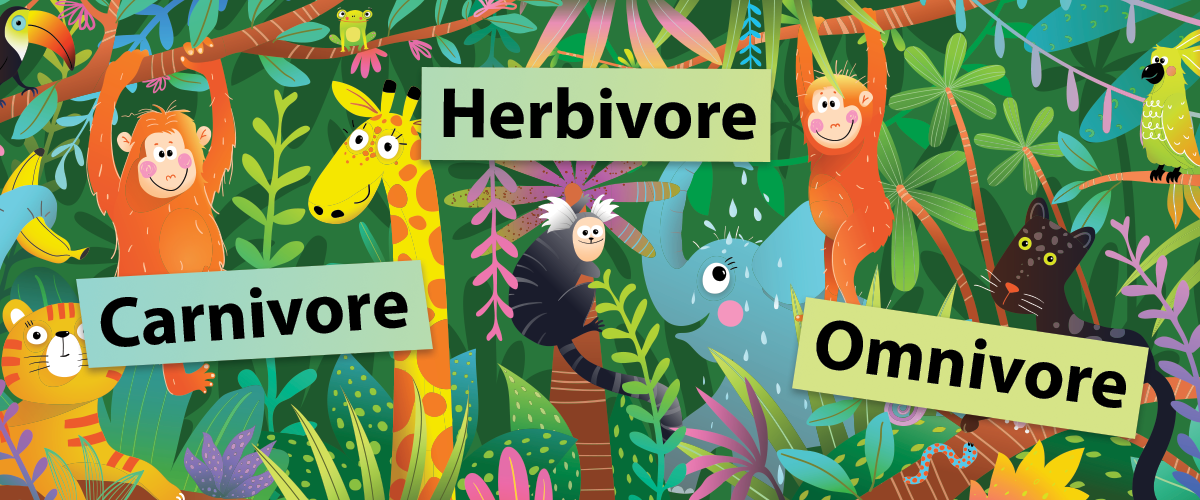
Herbivore, Omnivore, and Carnivore Animal Words for Kids (Free Printables)
Explore the wild world of animal diets and herbivores, omnivores, or carnivores. Plus, get awesome lists of animals from each group!
All animals need to eat to survive, but they don’t all eat the same foods. Generally speaking, animals can be divided into three broad categories: herbivores, carnivores, and omnivores. Learn about each type of animal and get lists of each type to share with your child.
What is an Herbivore?
An herbivore is an animal that only or mostly eats plants. This can include vegetation; tree leaves, bark, or wood; algae; fruits and vegetables; nuts and seeds; flowers and nectar. Humans who restrict themselves to a plant-based diet (vegetarians and vegans) could also be called herbivores.
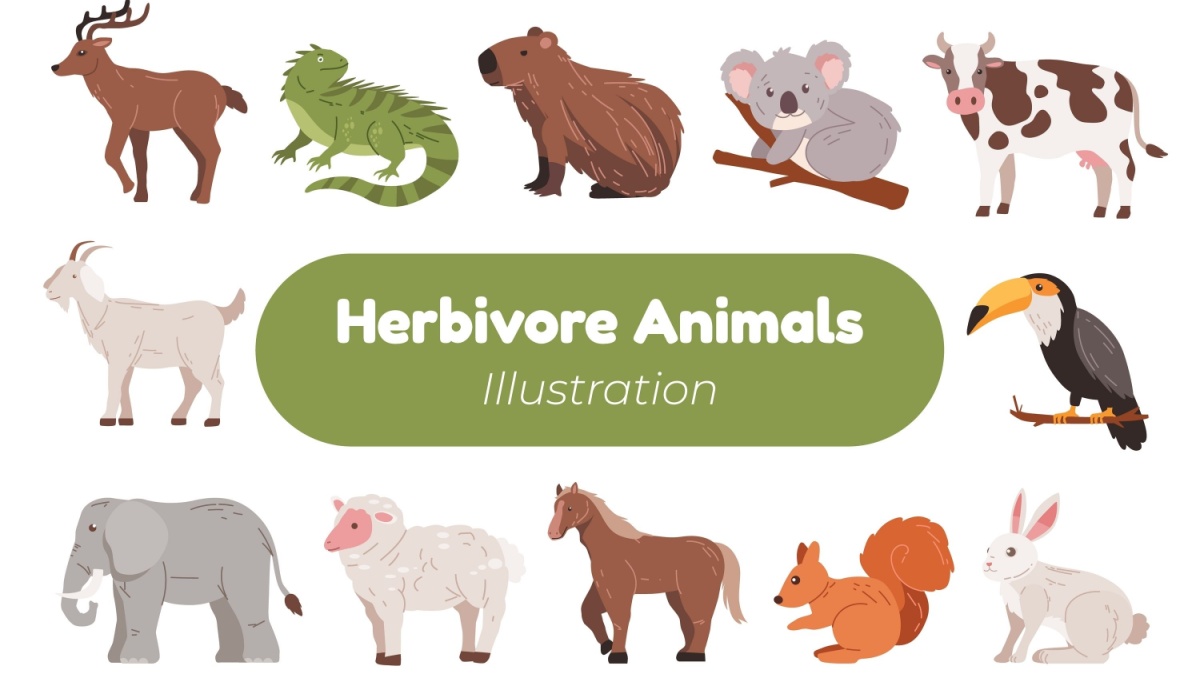
Herbivore Traits
Herbivores have body characteristics that help them eat and digest plants. Vegetation is often very tough and fibrous, making it harder to chew or digest. Here are some of the ways herbivore bodies are adapted to their plant-heavy diet:
Common Features of Plant-Eating Animals
- Teeth That Cut and Grind: Herbivores have narrow-edged incisors for cutting through plant material, and flat molars to grind it up before they swallow.
- Long Digestive Tract: Because plants are harder for bodies to break down, herbivores have long digestive tracts that give their systems time to extract as many nutrients as possible.
- Specialized Stomachs: As part of these extended digestive tracts, herbivores may have stomachs divided into different sections (as in cows or sheep), or large areas in the hindgut to finish digestion (like rabbits or horses).
- Eyes on Sides of Head: Many herbivores spend lots of time in the open, grazing for food. This makes them easy prey for carnivores and omnivores, so having eyes on the sides of their heads gives them a wide field of vision.
Common Behaviors of Plant-Eating Animals
- Frequent Feeding: It takes a lot of plant materials to provide the energy and nutrients that herbivores need, so they often spend a large portion of their days eating.
- Browsing or Grazing: These animals usually move slowly through the environment, eating as they go. Their bodies are specialized depending on whether they graze on grass and ground plants, or climb or reach up into trees for their meals.
- Large Groups: There’s safety in numbers, so many herbivores gather in large groups called herds or flocks.
- Migration: Herbivores travel to where food is plentiful, and often migrate in large groups to find fresh sources of vegetation in different seasons.
List of Herbivorous Animals
| alpaca | beaver | bison | camel | canada goose |
| capybara | cicada | colobus monkey | cow | donkey |
| elephant | fruit bat | gazelle | giraffe | goat |
| grasshopper | green iguana | green sea turtle | groundhog | hippopotamus |
| honeybee | horse | kangaroo | koala | llama |
| manatee | millipede | moose | okapi | ostrich |
| panda | porcupine | rabbit | rhinoceros | sloth |
| snail | swan | tapir | tortoise | wallaby |
| water buffalo | white-tailed deer | wildebeest | wombat | zebra |

What is an Carnivore?
A carnivore’s diet consists entirely or mostly of meat. Many of these animals are unable to digest plant material at all; these are known as “obligate carnivores.” These animals dine on the flesh, organs, blood, and bones of other animals. They may also eat insects, crustaceans, mollusks, fish, eggs, birds, and carrion (dead animals).

Carnivore Traits
Carnivores need to be able to hunt down, capture, and kill their prey. Their bodies are designed to help them do just that. These are some common carnivore traits:
Common Features of Meat-Eating Animals
- Sharp Teeth and Strong Jaws: Carnivores need sharp teeth known as canines (sometimes called “fangs”) to dig deep into meat. Their strong jaws help them tear carcasses apart.
- Claws: With claws on their feet, carnivores can get better traction when they run, then catch and rip apart their prey.
- Shorter Digestive Tracts: Meat is easier to digest than plants, so carnivores have shorter digestive tracts.
- Strong, Fast Bodies: Speed and strength help carnivores catch their meals, Their bodies are often muscular and sleek, allowing them to run fast, leap high, or wrestle prey to the ground.
- Forward-Facing Eyes and Keen Senses: It takes a lot of work to hunt for your dinner. Meat-eaters often have a strong sense of hearing, smell, or sight, with forward-facing eyes that give them good depth perception.
Common Behaviors of Meat-Eating Animals
- Predatory: Carnivores are watchful and wary, always on the lookout for their next meal.
- Solitary or Pack Hunters: Meat eaters hunt alone (like tigers and polar bears) or in small packs of well-coordinated animals (such as lions or wolves) that work together to bring down prey to share.
- Territorial: It takes a lot of work to find prey, so carnivores often defend their own hunting grounds from competitors.
List of Carnivorous Animals
| alligator | axolotl | barracuda | blue whale | bobcat |
| cat | cheetah | cobra | crocodile | dingo |
| dog | dolphin | eagle | falcon | great white shark |
| grouper | hawk | heron | hyena | jellyfish |
| leopard | lion | mongoose | octopus | orca (killer whale) |
| osprey | owl | piranha | polar bear | python |
| rattlesnake | salamander | scorpion | sea lion | seal |
| spider | tiger | vulture | walrus | wolf |


What is an Omnivore?
An omnivore is a combination of an herbivore and a carnivore: they eat some of both in their regular diets. While many carnivores will occasionally snack on plants, that’s not a usual part of their food plan. True omnivores eat a mix of meat and plants, depending on what’s available to them at any given time.
Omnivores get the best of both worlds: the long-lasting energy that comes from the protein in meat, along with the easy quick energy that vegetation and fruits can provide. This flexible diet means they can adapt to changing conditions, hunting down prey when it’s available or taking advantage of fruits, vegetables, and other vegetation when it’s in season.
Grizzly bears are good examples of omnivores. During the spring and summer months, they eat a lot of plants, roots, and berries, along with insects for protein. In the fall, they fatten up on salmon and forage for protein-filled nuts as they prepare for hibernation.
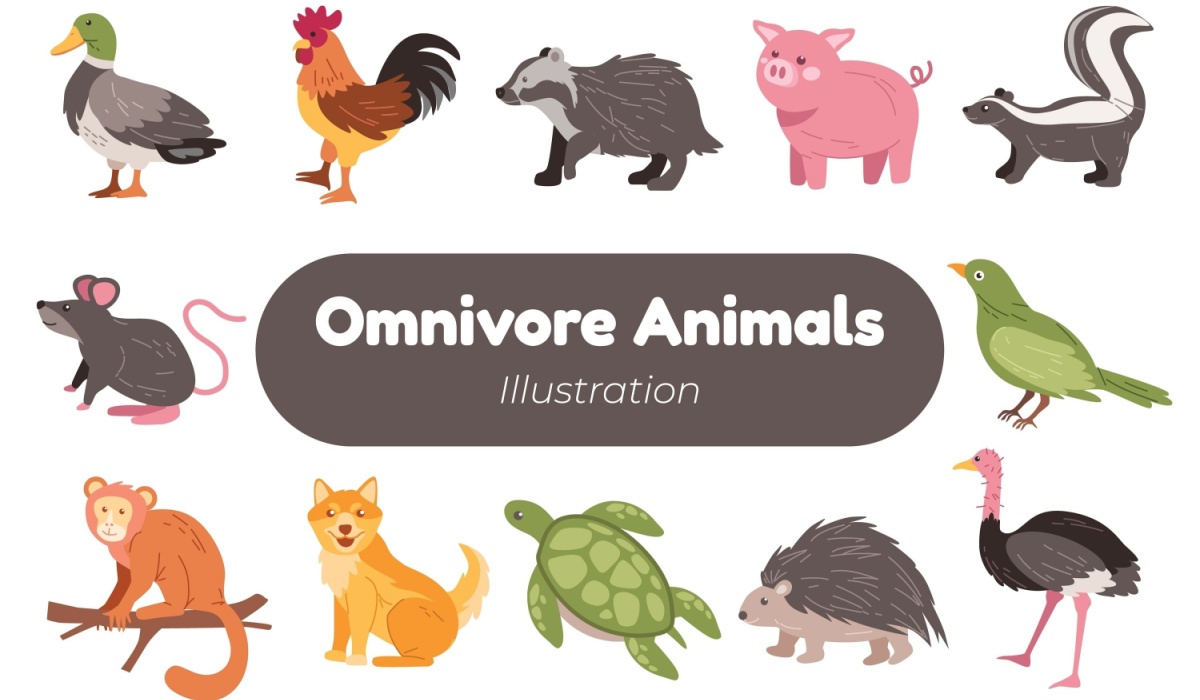
Omnivore Traits
As you might expect, omnivores have traits of both herbivores and carnivores:
Common Features of Omnivores
- Teeth: Omnivores have teeth for cutting, tearing, and grinding, so they can handle any type of food.
- Digestive tract: These animals don’t need complicated stomachs like herbivores, but they do need longer systems than those of carnivores to digest the plant materials they eat.
- Body type: Omnivores have traits like claws to help them catch prey, but they’re also dexterous enough to climb, grasp, and forage.
Common Behaviors of Omnivores
- Opportunistic Feeding: Omnivores eat both plants and animals, so they take advantage of whatever food is available. This flexibility helps them survive in a variety of environments.
- Foraging and Hunting: These animals spend time searching for fruits, roots, and insects, and may also hunt small animals or scavenge leftover meat when the chance arises.
- Adaptable Social Habits: Some omnivores live and feed in groups, while others prefer to be alone. Their social behavior often depends on the availability of food.
- Resourceful Behavior: Omnivores are known for their intelligence and problem-solving skills. They may use tools or clever strategies to access hard-to-reach food sources.
List of Omnivorous Animals
| baboon | bilby | black bear | blue jay | box turtle |
| brown bear | catfish | chicken | chimpanzee | chipmunk |
| cockroach | coyote | cricket | crow | duck |
| emu | gorilla | grizzly bear | hamster | hedgehog |
| house fly | human | maned wolf | mouse | opossum |
| otter | pig | raccoon | rat | red fox |
| ring-tailed lemur | seagull | skunk | snapping turtle | squirrel |
| sugar glider | tilapia | toucan | warthog | weasel |

More Educational Animal Resources
Free Animal-Themed Learning Games
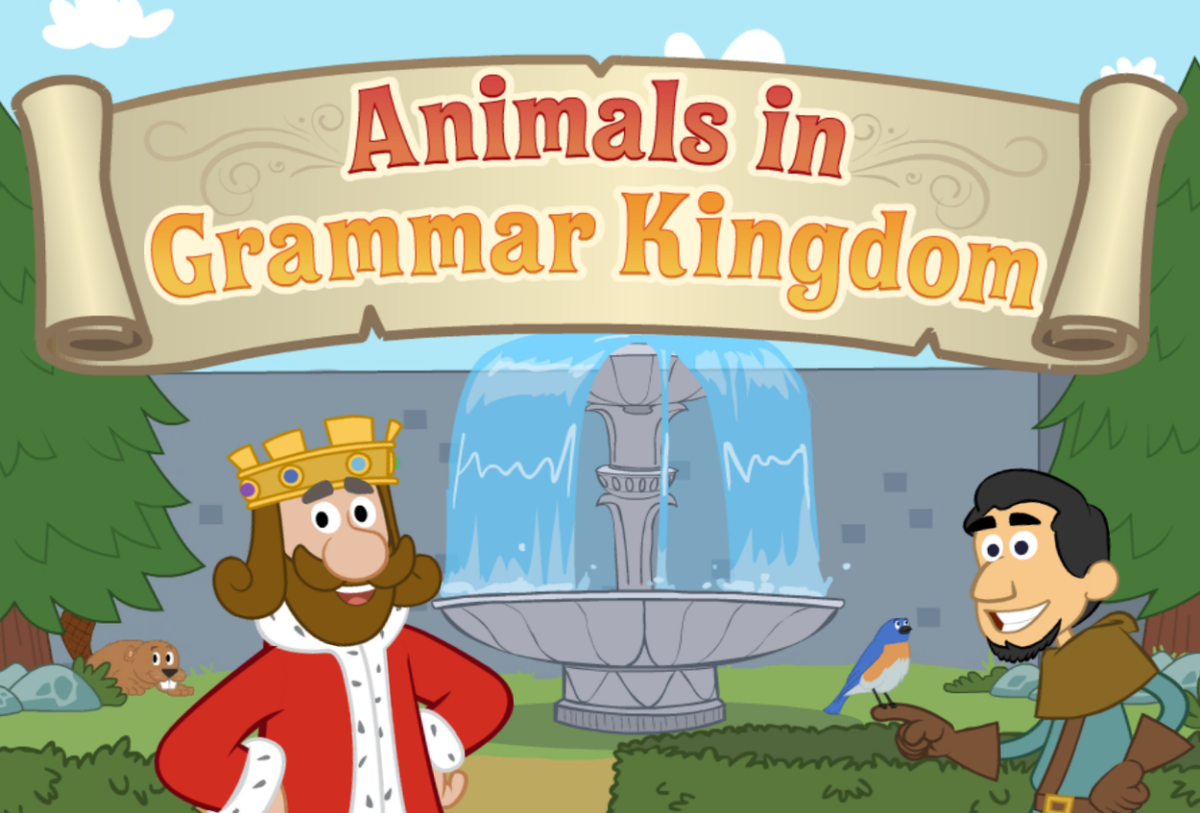
Animals in Grammar Kingdom
In this game, players join King Grammar on a royal quest to finish animal names with vowel teams that make long vowel sounds.
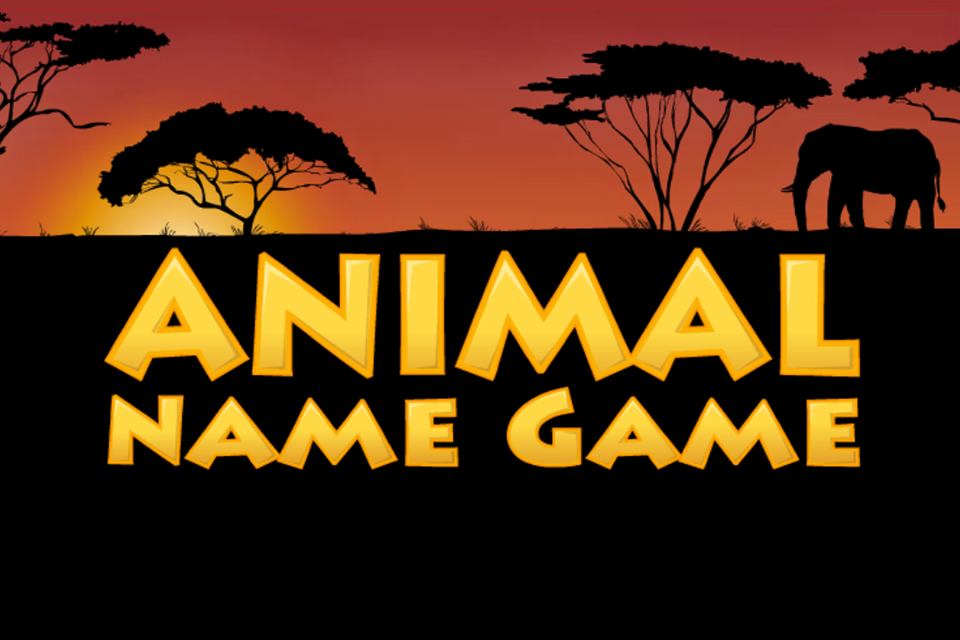
Animal Name Game
Meet animals at the zoo and choose the first letter in each one’s name. This is a great way to practice with letter recognition and letter sounds.

Build It Matching: Animals and Habitats
In this construction-themed game, players help place animals in their proper habitats while also using critical thinking skills.
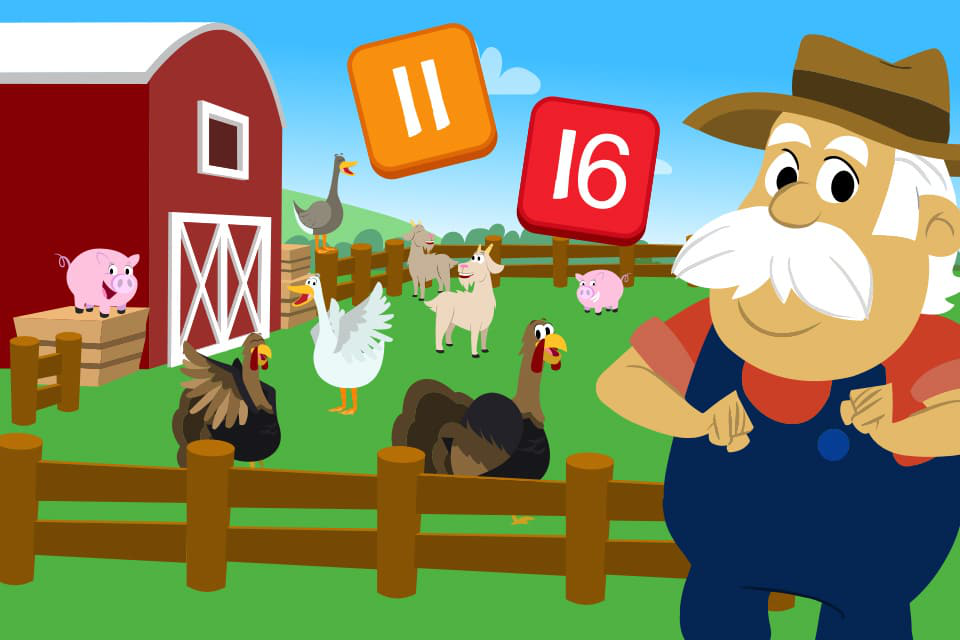
Barnyard Skip Counting
Help the farmer count out the animals he needs to bring to the fair by using a hundreds chart to skip count by 5s.
Test Your Animal Knowledge with ABCmouse on Instagram!
Zoo Animal Crafts, Activities and Coloring Pages
Delight animal lovers or fans of the zoo with 25+ learning activities to try on your next trip to the zoo. You’ll also find zoo animal craft ideas and free printable zoo animal coloring pages.
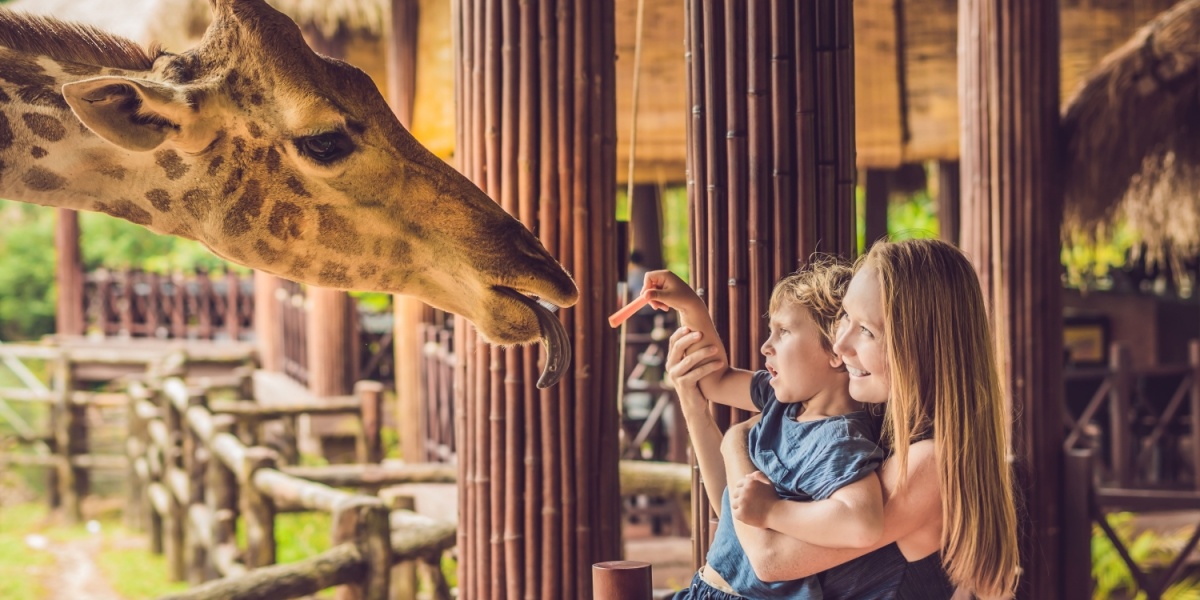
Animal Coloring Pages

You’ll find herbivores, carnivores, and omnivores in this collection of free printable coloring pages feature jellyfish, crabs, dolphins, sea turtles and more!
Foxes are omnivores, and you can pick from dozens of adorable and frolicking fox images to print and color from home or in the classroom.
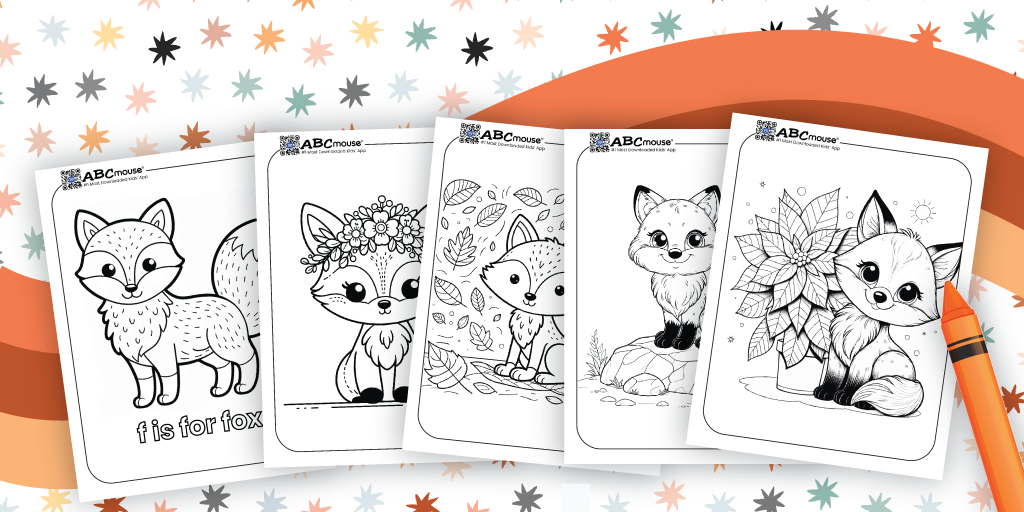

Llamas are herbivores, and you’ll find them wandering through fields, reading books, and playing with friends in these fun coloring pages.






